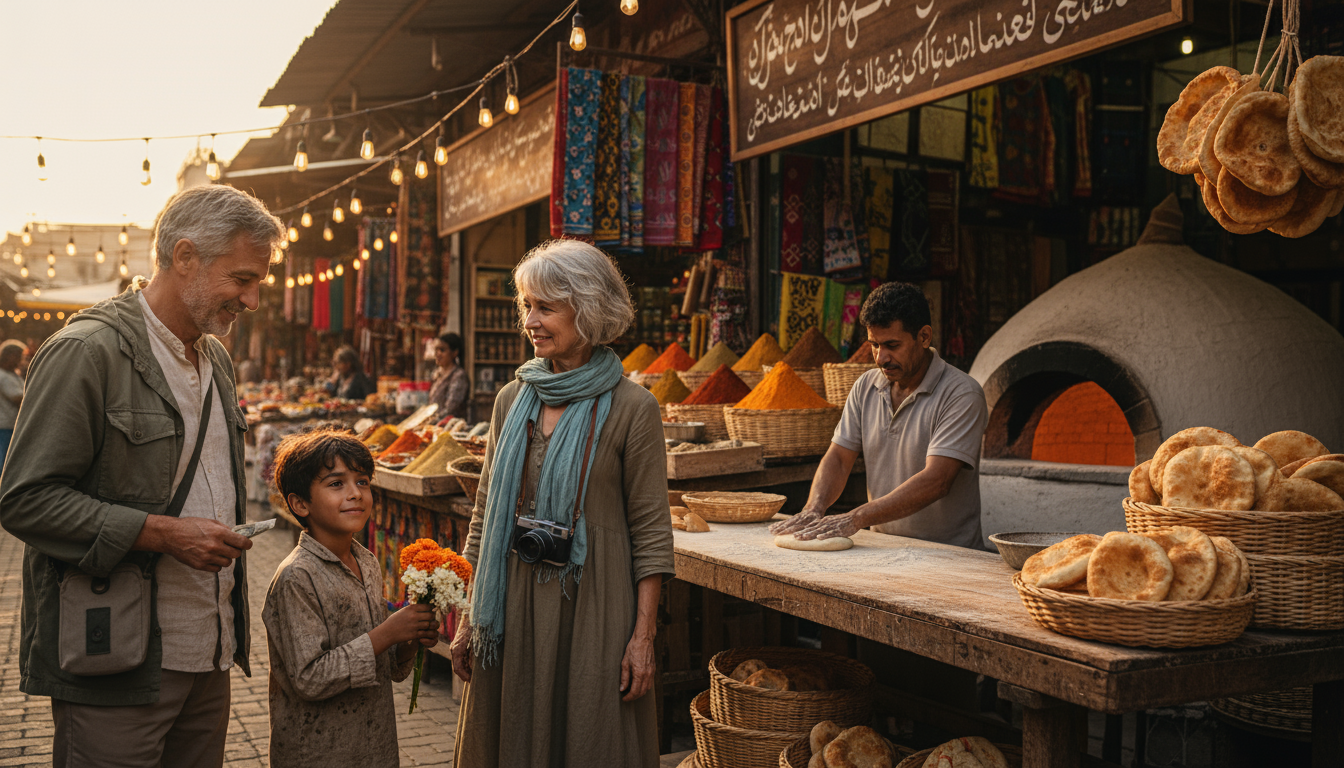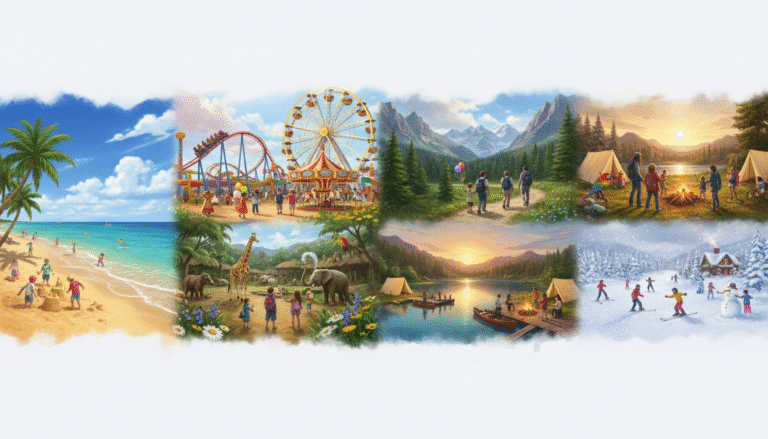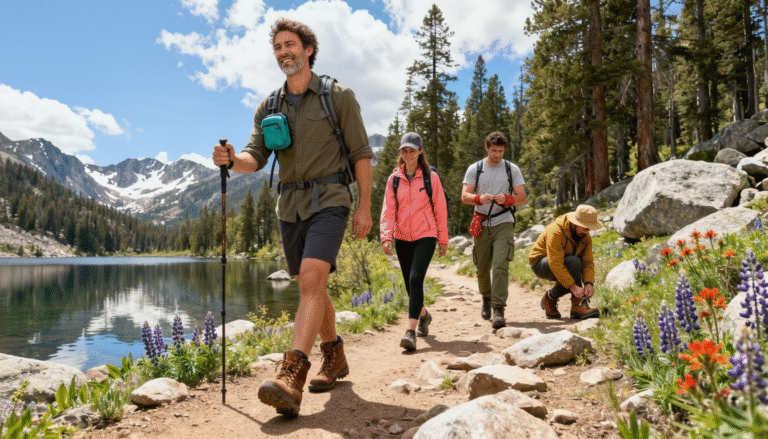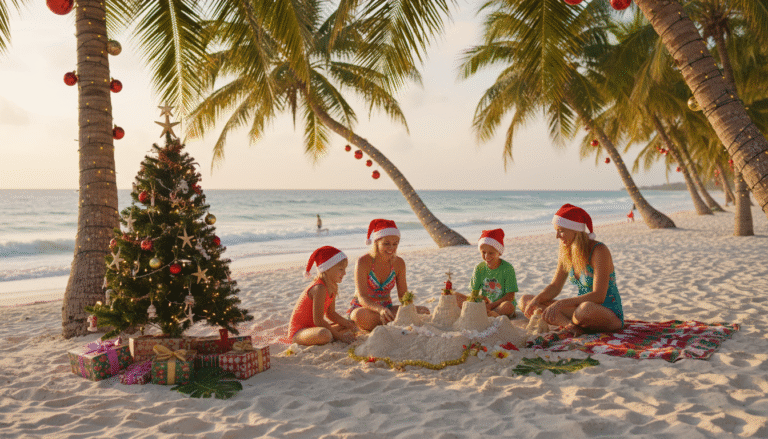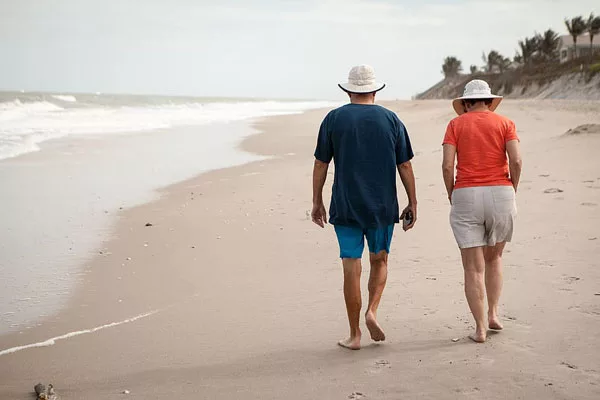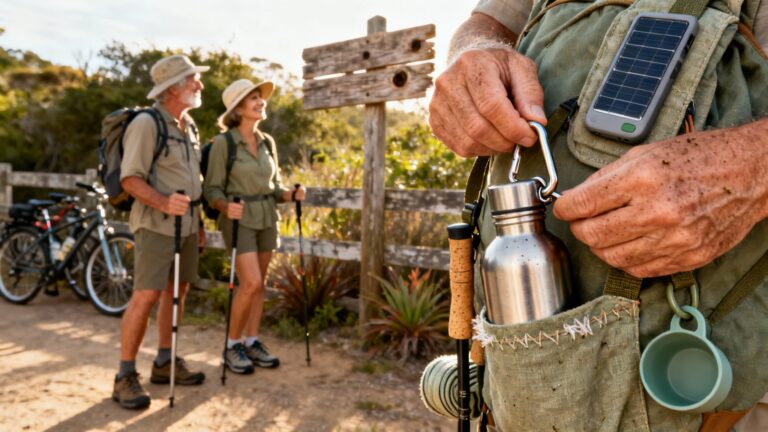Experiential Travel: The Complete Guide to Transformative Journeys This Year
Experiential travel swaps checklists for real connection, skill-building, and ethical immersion. Plan meaningful, human-centered trips this year.
Traditional vacation photos show you where you’ve been, but experiential travel changes who you are when you come home. In 2024, more travelers are skipping the sprint from landmark to landmark and choosing slow, hands-on experiences with real people. I still think about a dawn in Costa Rica—bare feet in cool sand, headlamp haloed with moths—as tiny turtle hatchlings made their wild dash to the waves. No filter, no crowd. Just a quiet, holy kind of focus. That’s the pull of experiential travel: you participate, you learn, and the place stays with you.
This guide keeps it simple: what experiential travel is, why it’s booming, who’s driving it, the best ways to try it, how to plan without stepping on toes, where to go in 2024, and how to turn a good trip into a meaningful one. Clear, practical, and human.
Key Takeaways
• Experiential travel prioritizes authentic cultural immersion over traditional sightseeing, with the global market reaching $1.3 trillion in 2024
• Gen Z and Millennials drive 75% of experiential travel bookings, seeking meaningful connections and personal growth through travel
• Popular experiences include cooking classes with local families, indigenous community visits, conservation projects, and traditional craft workshops
• Successful experiential trips require thorough research, flexible planning, and genuine respect for local cultures and environments
• Top destinations include Japan for tea ceremonies, Peru for Andean village life, Morocco for souk experiences, and Tanzania for community-based safaris
What is Experiential Travel?
Experiential travel asks you to slow down and take part of the local life. Less “look at that,” more “show me how.” You join a kitchen, a workshop, a field, a ritual—always by invitation, always with respect. It’s hands-on. You learn by doing and listening.
Compared to adventure travel (adrenaline-first) or eco-tourism (environment-first), experiential travel is people-first. Not in a selfie way—in a “pull up a chair and tell me the story behind this bread” way. It’s about practicing culture, not sampling it.
Imagine a market day. A tourist strolls, snaps, buys a magnet. An experiential traveler wakes before dawn, helps set up a stall, learns the seasons from the produce, practices greetings, and hears why a certain herb belongs in a family soup. In Oaxaca, my “quick market stop” turned into two hours of chile TLC and an impromptu salsa lesson. I walked out with a recipe and a friendship.
Stays shift too. Homestays, eco-lodges, and community-run guesthouses open the door to actual conversations. You trade a buffet for a table where dinner lasts because the stories do. You won’t remember the thread count, but you’ll remember the laughter as part of your unforgettable journeys.
The Travel Industry Market Boom
Experiential travel reached $1.3 trillion in 2024 and continues to grow around 4.5% annually. The pattern’s clear: people want depth, not just distance.

After the pandemic, travel turned purposeful. Fewer trips, more meaning. Analysts at Skift and Deloitte describe a pivot toward experience-led choices and community-centered design. Platforms that connect travelers with local hosts exploded after 2022. Half-day “tasters” became week-long immersions. Communities began shaping experiences on their own terms—and keeping more of the benefit.
Even big operators adapted: partnering with local cooperatives, co-creating workshops, ditching the “one-size-fits-all” script. Airlines now pitch what you can do when you land, not just how little it costs to get there. I’m here for that shift.
Who’s Leading the Experiential Trips?
Millennials and Gen Z travelers, mostly. They view travel as a way to grow—personally and professionally. Eventbrite has reported for years that Millennials value experiences over things. Gen Z adds another gear with longer, immersion-style trips.
Remote work helps. Digital nomads and flexible professionals stay long enough during their experiential travel to learn names, not just street maps. I parked in Lisbon for a month: mornings on Zoom, afternoons learning azulejos, evenings where fado slowed my pulse to the city’s rhythm. Not fancy. Just real.
Preferences for experiential travel vary:
• Asian travelers: food and craft deep-dives
• European travelers: nature-forward and conservation projects
• American travelers: cultural immersion and indigenous collaborations
Social sharing hasn’t vanished; it’s matured. Less choreography, more meaning. “Here’s my host aunt showing me dumplings” beats “here’s my perfect sunset.”
Types of Experiential Travel
Cultural Immersion Experiences
Homestays. You live a local rhythm—morning chores, evening tea, the small negotiations of who does dishes. A seven-year-old will fix your accent with love. This immersive experiences will make your experiential travel more worthwhile.
Traditional crafts. Pottery in Greek villages, weaving in the Guatemalan highlands, woodcarving in Bali. Multi-session workshops mean you actually improve. The first bowl tilts. The second stands tall. Creating lasting memories is not just about joining guided tours but actually doing the things locals love can mean more.

Language + culture. Lessons of the local language by day, practice in markets, schools, and community spaces by afternoon. Add a host family and your vocabulary gets brave fast. Not to mention, you can use this during conversations in your everyday life.
Spiritual traditions. Meditation in the local communities of Nepali monasteries, the Camino de Santiago, indigenous ceremonies—only with permission and guidance. Respect is the rule.
Culinary and Agricultural Experiences
Farm-to-table. Tuscany, Provence, Vermont. You harvest, knead, stir, and let patience do its quiet work. The silence when everyone tastes something perfect? That’s church.
Cooking with locals. Bangkok markets, Marrakech tagines, Andean grains. A small tweak from an experienced cook can rewrite your home kitchen.
Wine & olive oil. Argentina’s vineyards, Portugal’s Douro, California’s small-batch growers. You learn terroir, timing, and when “just a splash” becomes a generous pour.
Foraging & indigenous foodways. Aboriginal bush tucker in Australia, Inuit food traditions in Canada, Scandinavian forest foraging. You step into a knowledge chain, carefully.
Adventure and Conservation Experiences
Wildlife conservation. Turtle patrols in Costa Rica, ethical elephant sanctuaries in Thailand, community-led safaris in Tanzania or Madagascar. You help. You learn. You leave it better.
Citizen science. Coral reef monitoring in the Maldives (with dive training), bird migration studies in Panama. Curiosity gets a job to do.
Outdoor skills. Canadian bushcraft, Jordanian rock climbing with Bedouin guides, navigation and leave-no-trace. Competence feels good in the bones.
Duration & costs. Cultural immersion often runs 1–3 weeks and costs 20–40% more than standard tours (small groups, expert time, community benefit). Conservation projects can stretch to several weeks or months. Price follows guidance level and project scope.
Benefits of Experiential Travel
Personal growth.
You get braver, more patient, more curious. Reading a bus timetable in a new alphabet turns “I can’t” into “I can.” That carries home.
Mental health.
Novelty plus active learning is a healthy combo. The American Psychological Association has highlighted how these elements support mood and memory. The glow lasts longer than a beach nap.
Sticky learning.
Effortful learning sticks. Research popularized by Stanford’s Bjork Learning Lab explains why your hands-on bread lesson will outlast your fifteenth plaque.
Community impact.
More money stays local—guides, artisans, families. UNWTO and World Bank case studies point to higher household income when communities lead tourism.
Environmental gains.
Habitat restoration, monitoring, and sustainable resource projects leave real footprints—the good kind.
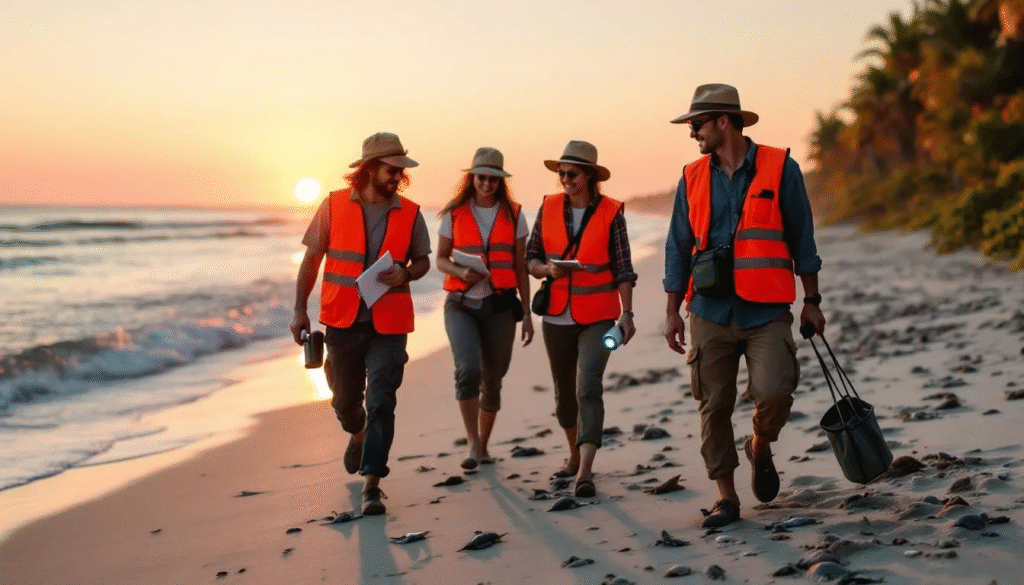
Start Planning Your Experiential Journey
Budget. Expect a 20–40% premium over conventional tours, usually with more included (instruction, materials, local transport, meals). A week-long immersion might be $2,000–$4,000 vs. $1,400–$2,800 for standard tours. Value beats volume here.
Booking. Remote or seasonal programs: 3–6 months ahead (sometimes longer). Culinary/craft: 1–3 months. Highly specialized or remote: 6–12 months. Ask about peak weeks and waitlists.
Seasonality. Align with harvests, migrations, and cultural calendars. The right week changes everything.
Prep. Learn greetings and numbers. Read up on etiquette (dress codes, photo consent, table customs). Sort health needs (vaccines, insurance that covers hands-on work). Pack to participate: closed-toe shoes, quick-dry layers, headlamp, notebook. I tuck in a small gift from home—coffee beans or tea. It starts easy conversations.
Choosing Authentic Experiences
Red flags. Big groups, rigid itineraries with no community input, glossy promises with few specifics, an obsession with photo ops over learning. If it feels staged, it probably is.
Check credentials. Community partnerships, fair pay, transparent revenue shares, real sustainability certifications (GSTC, B Corp, Rainforest Alliance). Read reviews that mention respect, reciprocity, and learning—not just “fun!!”.
Ask plainly. How do communities benefit? What percent stays local? Who designed the itinerary? How are traditions protected? Do guests receive cultural briefings?
Where to Go this Year (Popular Destinations Highlights)
Asia-Pacific
- Japan. Tea ceremony training, ryokan stays, Hokkaido farm days. Learn the meaning behind the motions.
- Indonesia. Woodcarving and batik in Bali, volcanic coffee farming in Java, sustainable fishing in Flores. Craft, coast, coffee.
- New Zealand. Māori cultural immersion, Fiordland conservation, adventure farming in Canterbury. When learning meets land, it sticks.

Europe
- Portugal. Paint azulejos in Porto, harvest cork in Alentejo, shadow fishers in Nazaré. Old skills, new respect.
- Romania. Maramureș village life, Transylvanian crafts, Carpathian shepherding. Slow is the point.
- Scotland. Islay whisky from grain to barrel, Highland farm work, traditional sessions in Edinburgh where you’re invited to join.
Americas
- Peru. Andean weaving co-ops, Amazon cacao farming, Lake Titicaca fishing traditions. History you can hold.
- Mexico. Oaxaca mezcal, Yucatán Mayan cooking, Chiapas artisan workshops. Flavors with stories built in.
- Canada. First Nations cultural programs in BC, maple seasons in Quebec, Arctic basics in Nunavut. Go prepared; come back different.
Costs & Duration
Developing regions can be more affordable with high cultural value; established hubs may cost more but run smoother. Many travelers find 2–3 weeks is the sweet spot for depth without burnout. Conservation projects often run longer for real impact.
Make It Meaningful with the Local Customs (Where the Good Stuff Lives)
Observe first. Spend day one noticing. Who greets whom? When does the market actually wake? What’s the local rhythm? Context breeds respect.
Listen fully. Phone away. Eyes up. Ask follow-ups. You’re here to learn, not to perform.
Give back thoughtfully. Buy local, tip well, and—if invited—offer skills the community actually wants. Let locals set the agenda. Reciprocity over rescue.
Reflect daily. I jot three lines each night: one surprise, one skill, one gratitude. Weekly, I ask what challenged me and what changed in me. Small practice, big lift.
Keep the thread. Follow hosts with consent, order from their shops, send photos back, plan a return. Culture is a relationship.
Leave margin for yes. Build slack so you can accept a last-minute invite—a family lunch, a festival detour, a dawn boat ride. Serendipity needs space.

FAQ
How much more does experiential travel cost than conventional tourism?
Typically 20–40% more, reflecting small groups, expert time, and community benefit. A week-long immersion might be $2,000–$4,000 vs. $1,400–$2,800 for standard tours—often with more included and more lasting value.
What’s the difference between experiential travel and volunteer tourism?
Experiential travel focuses on learning and cultural exchange; volunteer tourism centers on service projects. Both can be ethical when community-led; the intent differs.
Can solo travelers do this safely?
Yes. Choose vetted operators, share your itinerary with someone at home, favor homestays or small groups, and register with your embassy. Many solo travelers find experiential trips create instant community.
What if an activity feels unethical?
Trust your gut. Step away respectfully, note specifics, alert your provider, and seek community-led alternatives. Review honestly so better programs rise.
How far in advance should I book?
Immersion and conservation: 3–6 months. Agriculture: align with seasons (4–8 months). Culinary/crafts: often 1–3 months. Highly remote or specialized: 6–12 months.
Conclusion: Why Experiential Travel Belongs on Your Calendar This Year
Experiential travel turns trips into turning points. You come home with skills, stories, and a wider circle of people you quietly root for. If you’re craving connection, perspective, and memories that don’t evaporate by Tuesday, take the hint.
Start small: a weekend homestay, a local cooking class, a craft workshop in the next town. Or go big: tea ceremony training in Japan, weaving in the Andes, conservation in Madagascar. Pack curiosity, humility, and time. A place will meet you halfway. That’s experiential travel at its best: not just seeing the world, but letting it shape you—gently, and for good.

